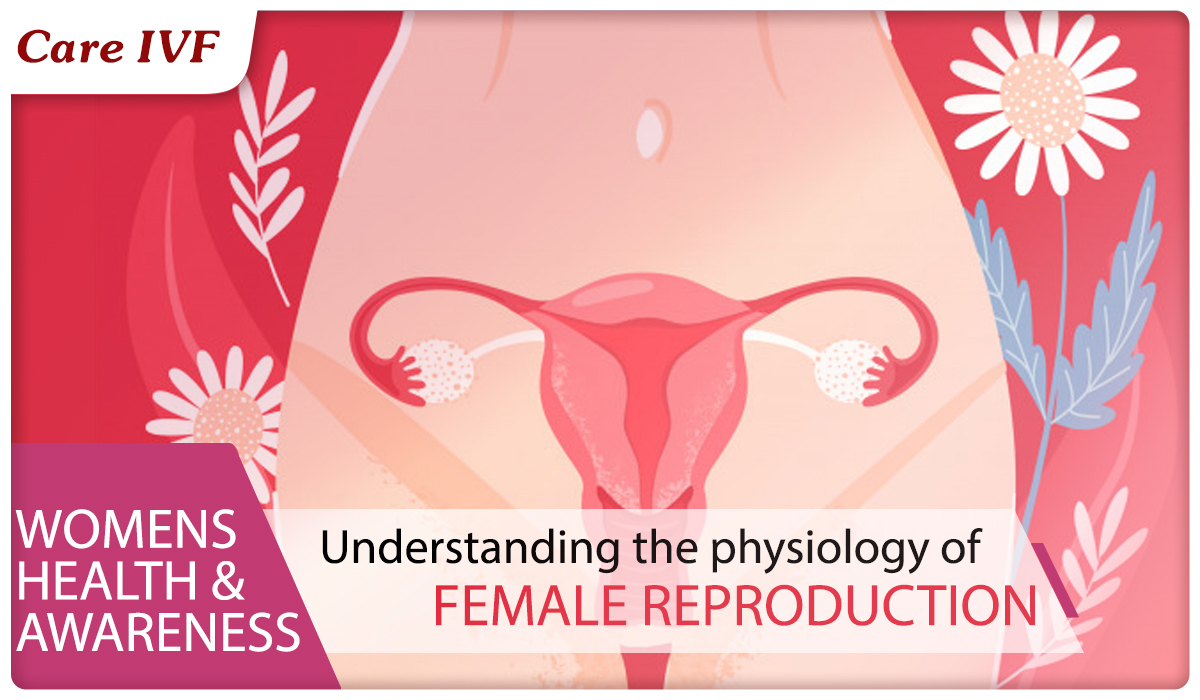

Understanding the Female Reproductive System
The female reproductive system consists of the ovaries (which produce eggs or oocytes), fallopian tubes, uterus, cervix, vagina and vulva.
Both the male and female reproductive systems must be functioning properly for a couple to conceive naturally. A problem with the structure or function of either partner’s reproductive system can cause infertility.
The female reproductive organs include:
Ovaries — The ovaries are two small, oval-shaped glands located on either side of the uterus. They are home to the female sex cells, called eggs, and they also produce Estrogen, the female sex hormone.
Fallopian tubes — The fallopian tubes are narrow tunnels for a fertilized egg to make its way down to the uterus. Damage or blockage to the fallopian tubes — called tubal disease — can sometimes cause fertility problems.
Uterus — The uterus is a hollow, pear-shaped organ located in a woman’s lower abdomen, between the bladder and the rectum. It is also called the “womb” and holds the Fetus during pregnancy. The ovaries produce the egg cells, called the ova or oocytes. The ovaries take turns in releasing one egg in each cycle.
Endometrium: Each month, the uterus develops a lining (the endometrium) that is rich in nutrients. The reproductive purpose of this lining is to provide nourishment for a developing foetus. Endometrium plays crucial role in implantation success. Implantation can only occur when the endometrium is receptive. There is a synchronisation in the natural cycle to ensure endometrium is ready around the time the embryo (if the egg was fertilised) will implant.
Uterine abnormalities, such as fibroids or endometriosis, may cause infertility by interfering with egg fertilization or embryo implantation and development.
Cervix — The cervix is the lower, narrow part of the uterus, located between the bladder and rectum. It forms a canal that opens to the vagina. Often called the neck or entrance to the womb, the cervix lets menstrual blood out and semen into the uterus. Growths in the cervix called polyps can sometimes affect the fertilization or embryo growth process.
Vagina — The vagina, also known as the birth canal, joins the cervix (the lower part of uterus) to the outside of the body. The vaginal pH and cervical mucus play important roles in maintaining sperm function after intercourse. The vaginal micro flora plays a crucial role in fertility.
Vulva — this is the external portion of the female genital organs.
How does the female reproductive system work?
The ovulation cycle begins in the brain. The Hypothalamas – Pituitary axis kick starts every cycle.
The Reproductive system is governed by the brain. Two Brain centres play a key role in the regulation and control of the reproductive system. The Hypothalamus, located in the central part of the brain, and the pituitary gland, located at the base of the brain just below the hypothalamus. They control the female reproductive cycle via reproductive hormones. Hormones act as chemical messengers that affect the metabolism of other cells with receptors for the hormone. Hormones may be produced in one part of the body and travel in the blood to another part of the body to initiate an action. In this case the hormones produced by the brain centres act on female reproductive organs and regulate the reproductive cycle. In addition, the female reproductive system produces female sex hormones oestrogen and progesterone that help maintain the reproductive cycle.
This is the step by step chronology of events that lead to ovulation and fertilization.
- The hypothalamus produces gonadotropin-releasing hormone (GnRH) to regulate the production and release of FSH (follicle-stimulating hormone) and LH (luteinizing hormone) in the pituitary gland. FSH and LH are the two gonadotropic hormones involved in both male and female reproduction.
- The FSH and LH both act on the ovaries to release one mature oocyte in each cycle. Although both the ovaries recruit multiple follicles (fluid filled sacs contain a growing egg) only one of them will release a mature egg. This period of growth of follicles is called the follicular phase and it ends in ovaulation.
- The growing follicles also release the hormone estrogen that acts on the uterus and stimulates the growth and thickening of the endometrium (the lining of the uterus)
- After ovulation the follicles become corpus luteum that releases the hormone progesterone that play an important role in endometrial growth and implantation success.
- The Fallopian tubes have hair like projections call fimbriae, near the ovaries that comb the ovaries and help funnel and ovulated egg into the fallopian tubes.
- The oocytes are then transported to the fallopian tube where fertilization by a sperm may occur. The inside of the fallopian tubes is covered in small hair like projections called cilia, that work in concert with the smooth muscles of the tube to carry an egg or an embryo into the uterus. It takes 5 days for the fertilized egg to reach the uterus.
- This fertilized egg undergoes series of cell division and proliferates to each the day 5 of embryonic growth called the blastocyst stage
- Meanwhile in the uterus the uterine lining has thickened in response to the estrogen and progesterone hormones of the reproductive cycle.
- Once in the uterus, the blastocyst can implant into thickened uterine lining and continue to develop. If implantation does not take place, the uterine lining is shed as menstrual flow.
Article Tags
About the author

Leave a Comment